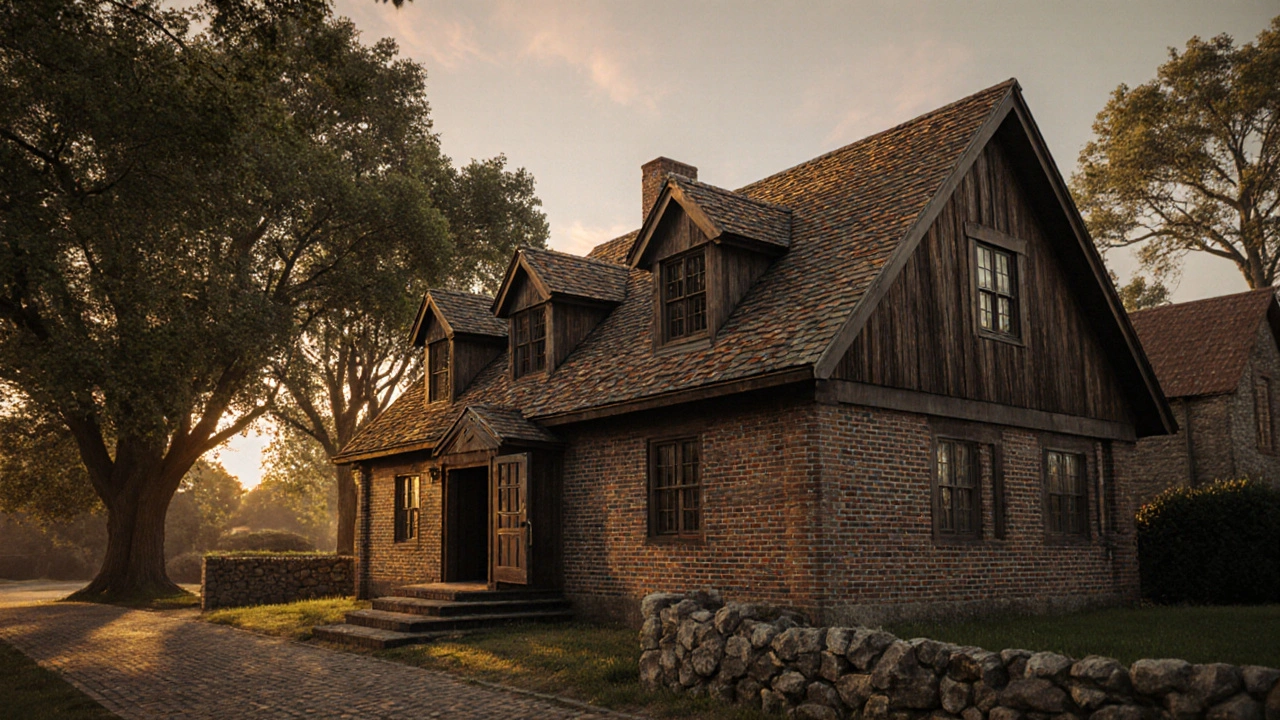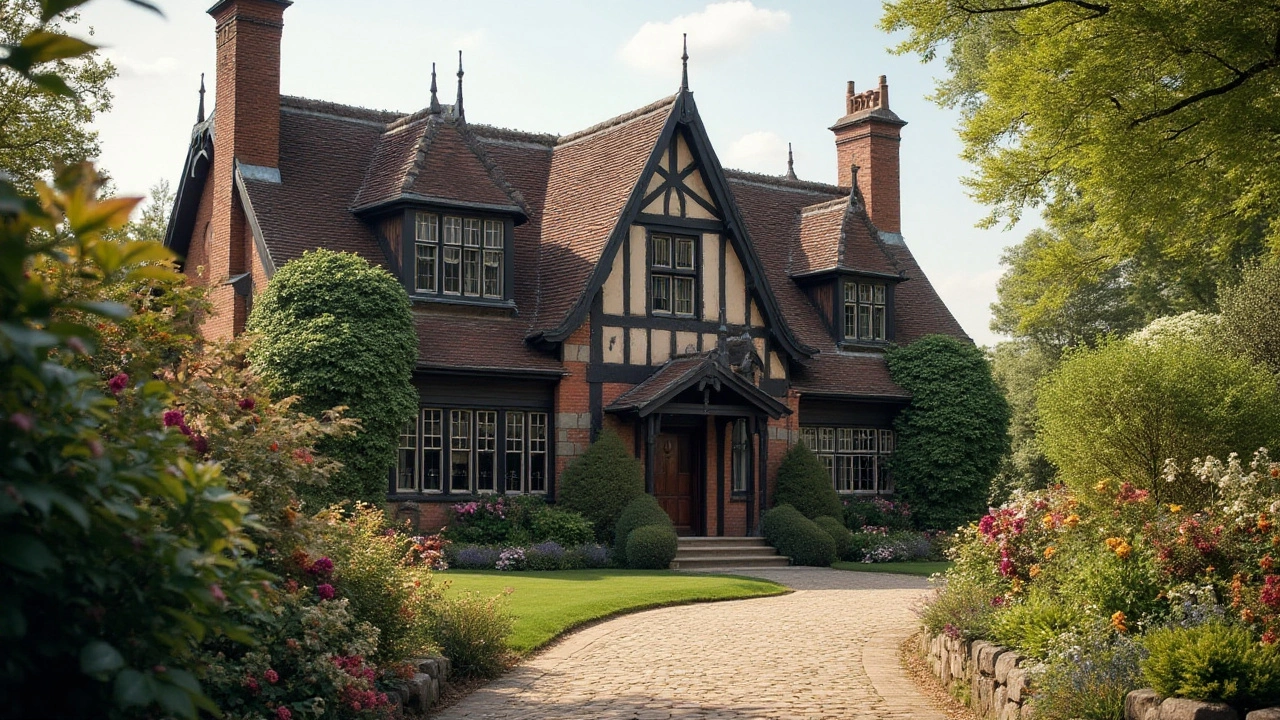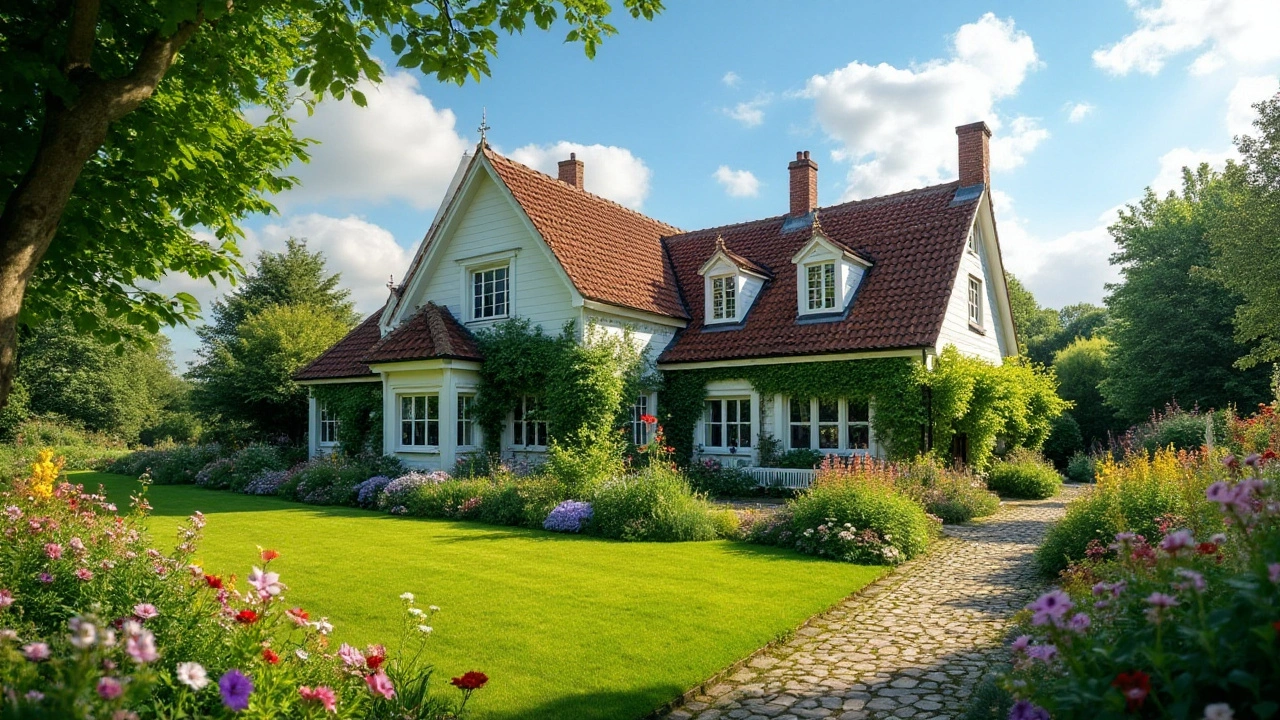Explore the enduring charm of Dutch Colonial Revival architecture, its signature gambrel roof, historic roots, and how to preserve or adapt these timeless homes today.
Dutch Colonial Revival: How to Spot It and Care for It
That house with the barn-like roof and cozy porch? There’s a good chance it’s Dutch Colonial Revival. Popular from about 1890 to 1930, this revival style borrows Dutch settler forms and adds American comfort. If you want to identify, restore, or update one, focus on a few simple clues and practical fixes.
Key features to spot
Gambrel roof — The most obvious sign is the gambrel roof: two slopes on each side, the lower slope steeper than the upper. It creates more headroom on the top floor and gives the house that barn-like profile.
Dormers — Look for continuous or individual dormers breaking through the roofline. They bring light to the upper rooms and are common in many Dutch Colonial Revival homes.
Flared eaves and overhangs — Some houses have eaves that flare out slightly at the base of the roof. It’s a subtle detail that helps you tell a Dutch Colonial Revival from other gambrel-roofed buildings.
Materials and siding — Many examples use clapboard, wood shingles, or brick. The finish varies by region and budget, but original homes often used local materials.
Porches, doors, and windows — Small covered porches, simple columns, and double-hung windows with multiple panes are typical. You might find Dutch doors (split top and bottom) on some restorations or authentic examples.
Symmetry with variations — Facades are usually balanced but not rigid. Expect a center door or slightly off-center entries, paired windows, and chimneys that add visual weight.
Practical renovation and maintenance tips
Preserve the roof profile — The gambrel roof defines the style. If you replace roofing, match the original roof pitch and keep dormer locations. Using modern materials like architectural shingles is fine, but keep the shape accurate.
Restore windows wisely — Original multi-pane windows are a big part of the look. Restore sash and glazing where possible. If replacement is necessary, choose energy-efficient units that mimic the original muntin patterns.
Match siding and trim — When repairing exterior walls, match the siding type and trim size. Small differences change the house’s character. For painted wood, research historic colors or pick muted tones that suit the era.
Upgrade systems discreetly — You can add insulation, HVAC, and modern wiring without ruining the appearance. Run wiring in basements or attics, and use storm windows or interior insulation techniques to keep historical trim intact.
Mind the foundation and chimneys — Many older Dutch Colonials have masonry foundations and brick chimneys. Check for cracks and rising damp; repointing and proper drainage can save long-term costs.
Want to learn more? Walk neighborhoods built in the early 20th century—suburban streets and older towns often have classic examples. Take photos, note rooflines and door styles, and you’ll start spotting Dutch Colonial Revival houses everywhere.
Dutch Colonial Revival architecture brings timeless elegance and practicality to homes, characterized by its distinct gambrel roofs, symmetrical facades, and charming dormers. Emerging in the early 20th century, this style is a nod to the original Dutch Colonial homes of the 17th and 18th centuries. It became popular in the United States, especially in residential neighborhoods, for its unique blend of tradition and modern-day comfort. Intricate woodwork, substantial use of brick and stone, and ample light are some key features that enthusiasts and designers cherish today.
Dutch Colonial Revival architecture holds a unique place in history, fusing nostalgic charm with practical design. Emerging in the late 19th century, this style draws inspiration from the early Dutch settlers' homes in America. Known for its distinctive gambrel roofs and symmetrical facades, the Revival movement reflects an appreciation for the past while adapting to modern needs. This exploration uncovers the enduring influence and cultural significance of this architectural style.



